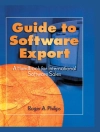Learn about business intelligence (BI) features in T-SQL and how they can help you with data science and analytics efforts without the need to bring in other languages such as R and Python. This book shows you how to compute statistical measures using your existing skills in T-SQL. You will learn how to calculate descriptive statistics, including centers, spreads, skewness, and kurtosis of distributions. You will also learn to find associations between pairs of variables, including calculating linear regression formulas and confidence levels with definite integration.
No analysis is good without data quality.
Advanced Analytics with Transact-SQL introduces data quality issues and shows you how to check for completeness and accuracy, and measure improvements in data quality over time. The book also explains how to optimize queries involving temporal data, such as when you search for overlapping intervals. More advanced time-oriented information in the book includes hazard and survival analysis. Forecasting with exponential moving averages and autoregression is covered as well.
Every web/retail shop wants to know the products customers tend to buy together. Trying to predict the target discrete or continuous variable with few input variables is important for practically every type of business. This book helps you understand data science and the advanced algorithms use to analyze data, and terms such as data mining, machine learning, and text mining.
Key to many of the solutions in this book are T-SQL window functions. Author Dejan Sarka demonstrates efficient statistical queries that are based on window functions and optimized through algorithms built using mathematical knowledge and creativity. The formulas and usage of those statistical procedures are explained so you can understand and modify the techniques presented.
T-SQL is supported in SQL Server, Azure SQL Database, and in Azure Synapse Analytics. There are so many BI features in T-SQL that it might become your primary analytic database language. If you want to learn how to get information from your data with the T-SQL language that you already are familiar with, then this is the book for you.
What You Will Learn
- Describe distribution of variables with statistical measures
- Find associations between pairs of variables
- Evaluate the quality of the data you are analyzing
- Perform time-series analysis on your data
- Forecast values of a continuous variable
- Perform market-basket analysis to predict customer purchasing patterns
- Predict target variable outcomes from one or more input variables
- Categorize passages of text by extracting and analyzing keywords
Who This Book Is For
Database developers and database administrators who want to translate their T-SQL skills into the world of business intelligence (BI) and data science. For readers who want to analyze large amounts of data efficiently by using their existing knowledge of T-SQL and Microsoft’s various database platforms such as SQL Server and Azure SQL Database. Also for readers who want to improve their querying by learning new and original optimization techniques.
Зміст
Part I. Statistics.- 1. Descriptive Statistics.-2. Associations Between Pairs of Variables.-
Part II. Data Preparation and Quality.- 3. Data Preparation.- 4. Data Quality and Information.-
Part III. Dealing with Time.- 5. Time-Oriented Data.- 6. Time-Oriented Analyses.-
Part IV. Data Science.- 7. Data Mining.- 8. Text Mining.
Про автора
Dejan Sarka, MCT and Data Platform MVP, is an independent trainer and consultant with more than 30 years of experience who focuses on development of database and business intelligence (BI) applications. He works on projects, and spends about half of his time on training and mentoring. He is the founder of the Slovenian SQL Server and .NET Users Group. Dejan Sarka is the main author or co-author of 19 books about databases and SQL Server, and has developed many courses and seminars for Microsoft, Radacad, Solid Q, and Pluralsight.












